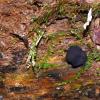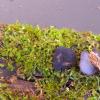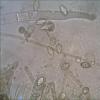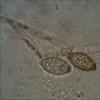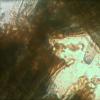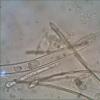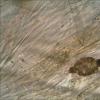
18-12-2025 21:17
Pol DebaenstThe identification took me to Byssonectria deformi

19-12-2025 10:10
Patrice TANCHAUDBonjour, récolte réalisée en milieu dunaire, a

18-12-2025 17:23
 Bruno Coué
Bruno Coué
Bonjour,je serais heureux d'avoir votre avis sur c

18-12-2025 18:07
Margot en Geert VullingsThese plumes were found on rotten wood.They strong

17-12-2025 18:35
 Michel Hairaud
Michel Hairaud
Bonjour à tous/Hi to everyone I am passing along

15-12-2025 15:48
 Danny Newman
Danny Newman
Melanospora cf. lagenaria on old, rotting, fallen

15-12-2025 15:54
 Johan Boonefaes
Johan Boonefaes
Unknown anamorph found on the ground in coastal sa

15-12-2025 21:11
 Hardware Tony
Hardware Tony
Small clavate hairs, negative croziers and IKI bb

15-12-2025 07:09
 Danny Newman
Danny Newman
indet. Rutstroemiaceae sp. on unk. fallen leavesMc
j'ai trouvé ce spécimen en forêt tropicale sur bois pourri recouvert de mousse voici ses caractéristiques :
Chapeau : 1,3 à 1,5 cm surface hyméniale brun noir a noir violeté avec nuances rougeâtres dans la chair Stipe sans, Spores largement ellipsoides fortement ponctuées 9,7 – 12,1 X 17 – 19,4 – 21,8 hyalines dans la jeuness puis brunissant les mures brunes munies de 2 appendices apiculaire tronqués Paraphyses se terminant en bouton (8,5) Asque operculé faiblement amyloides jeunes 223 x 15,8
?

Great catch!
I've been rather inactive on the forum recently and had options to answer unfortunately in only very limited occasions. This will hopefully improve in next weeks when my new house should start to be operational for living and work.
This very interesting collection should much more likely represent Peziza s.l. around the Peziza obtusapiculata/prosthetica than a Discina.
Quite differently to a Hypocreoid fungi you sent me last year (also from Mayotte), this collection we could much more efficiently solve. We would very much like to compare it with some other collections of tropical apiculate pezizas.
If you could dry these apothecia in a room temperature, you can send me again the material, but this time to a different address. Please use my e-mail address for further details.
Cheers,
Neven

As-tu vérifié la réaction des asques au Melzer ou au Lugol ? Je pense que ça pourrait être plutôt une espèce du genre Peziza. La forme générale de la spore, avec de tels capuchons apicaux, me fait penser à Peziza thozetii Berk., bien que l'ornementation paraisse plus grossière.
A creuser.
Bonjour cher Collègue,
L' amyloïdie des asques conduit vers les genres Peziza ou Pachyella, ce dernier genre si l'exc. ectal est palissadique. Je pense cependant qu’il s’agit d’une espèce du genre Peziza.
A rechercher, de par la couleur de l’apothécie, vers P. cornui ou P. neocornui. Je n'ai pas d'autre proposition ?
Amicalement
René

